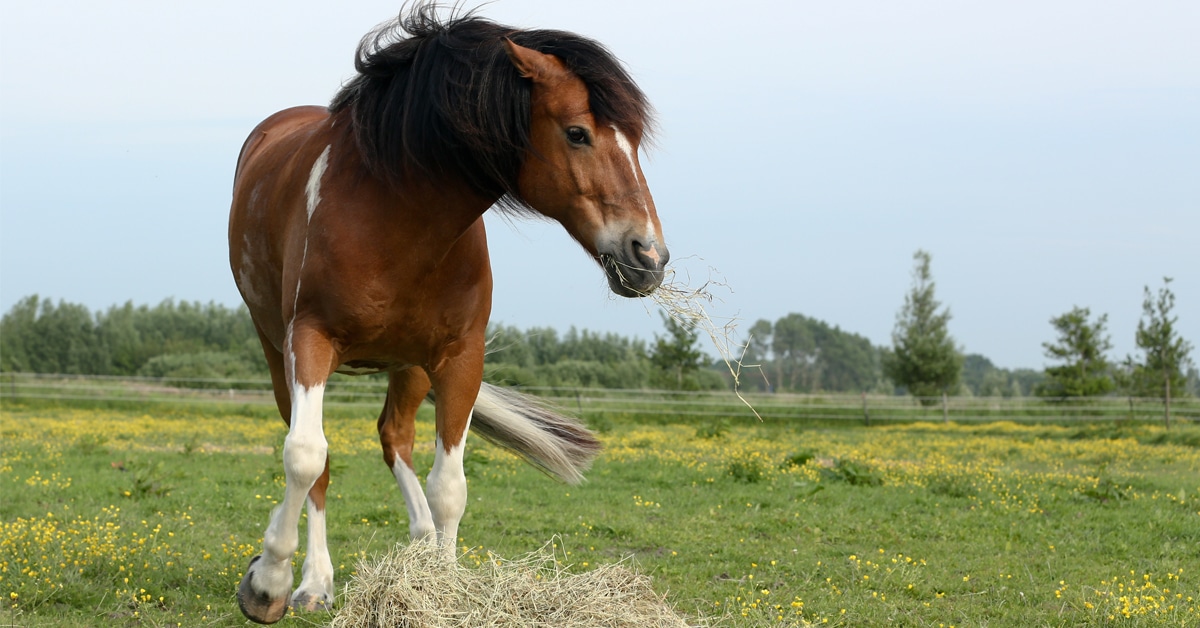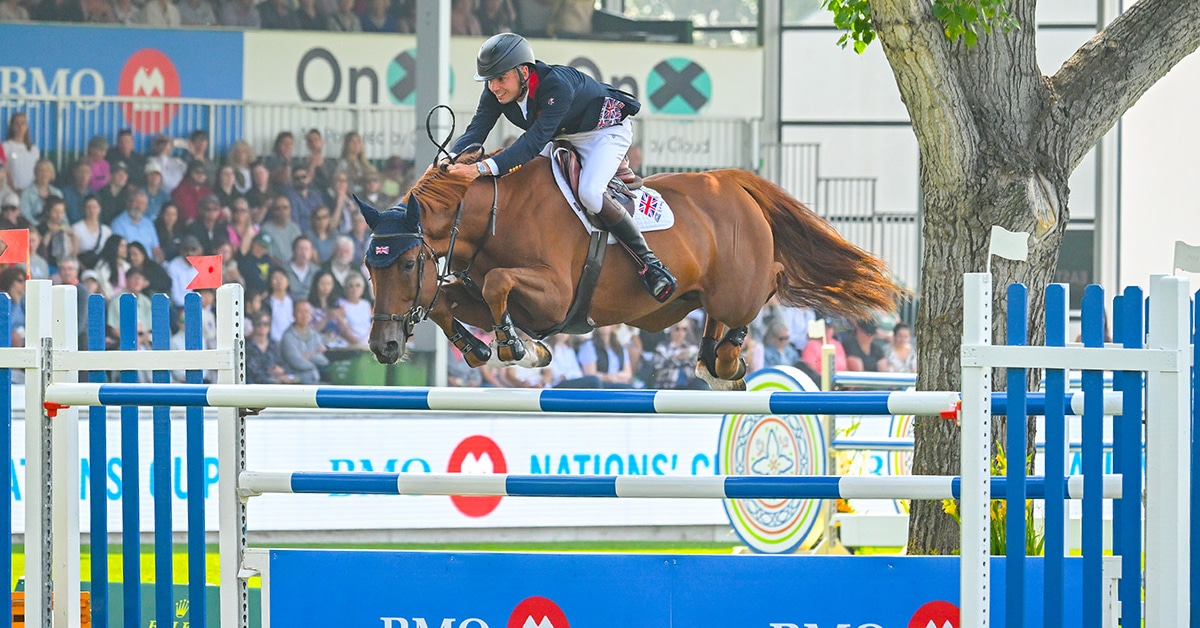The world is shrinking. Globalization has seen Starbucks popping up from Seattle to Moscow to Shanghai. When you can be sure a chipper barista clad in a green apron will whip up your latte no matter what corner of the globe you’re in, you can’t be surprised that there are demands for a more streamlined system of global equine trade.
With ever-increasing numbers of horses crossing borders for breeding, performance, and even consumption, there has been increased demand for a method to identify each individual equine. Since 2009, the EU has implemented regulations that require horses moving within the region to meet strict identification requirements. One of these requirements is that the horse in question possesses a Universal Equine Life Number, or UELN.
What is a Life Number?
The UELN is the internationally-accepted method for identifying a horse – a 15-digit alphanumeric code that is unique to every horse in the world. There is a specific system for assigning a horse this code. The first three digits are the number of the country where the database that registered a foal is located. In the case of Canada, that number is 124. The second three digits are the code of the registry database. For example, the Canadian Sport Horse code is 002. The remaining digits are the numbers assigned by the registering body.
Currently, live horses that are imported to the European Union must be in possession of a UELN. While this number is easily obtainable by anyone interested in exporting a horse to Europe, of greater pragmatic concern (for some) is the fact that any horse meat imported to Europe must show a record of lifetime traceability by the summer of 2013.
Eventually, in all facets of the horse industry – even within our borders – horses will be required to carry a record of information that includes their farm of residence, the places they have travelled (ex. competition venues, racetracks) and the drugs and veterinary treatments they have received. There are many purposes for such a traceability system – to ensure biosecurity (prevent the transmission of diseases such as nEHV-1), for emergency management (ex. identifying horses that may be separated from their owners in the event of a natural disaster), for food safety (for those horses destined for slaughter), and to track pedigree and performance information to increase a horse’s value.
Traceability and what it means in Canada
For ten years, Equine Canada has been in talks to develop a national system that would track horses for the purposes mentioned above. The program is called CanEquid – Canada’s National Equine Identification and Traceability Program.
Dr. Edward Kendall, chair of Equine Canada’s equine ID committee, says that Equine Canada has been in talks with the CFIA and Agriculture Canada about traceability. “Through our industry forums and town hall meetings, we learned that the horse industry was interested in (traceability) regulations if, and only if, there would be financial support for infrastructure to support those regulations.”
So far, that financial support from the government hasn’t been forthcoming; however, Agriculture and Agri-Food Canada did approve funding up to $478,766 to Equine Canada to do preliminary research on developing a system. This funding ended in 2010 and provided money for Equine Canada to conduct a pilot study, a national survey, a preparedness plan for traceability and an implementation strategy. Since then, Equine Canada has received no further funding from the government for traceability.
Right now, Equine Canada’s plan for implementation of a traceability system using UELNs will be based on the practices of business, according to Dr. Kendall. This means that the UELN and traceability system will be introduced slowly and logically; for example, Equine Canada will approach veterinarians and ask them to integrate keeping a record of their treatments on a centralized database. Or, when a horse is sold, the people involved in the transaction will have to record that data in a centralized database. Using this system, horses will be added to the database gradually over time. “We have communicated to the federal government that given the fact that the equine industry is expected to mount the traceability initiative by itself, the industry will plan a phased-in voluntary approach.”
To this end, Equine Canada will first target horses that frequently move from location to location, such as show horses, race horses and breeding stock. “We intend to strengthen our normal business practices requiring things such as standardized identification and reporting of critical moves to participate in a whole variety of things,” says Dr. Kendall. He adds that Equine Canada intends to work with the Canadian Veterinary Medical Association to encourage them to accept this standardized identification and the UELN as the identifier for the animal.
Right now, according to Dr. Kendall, the breed registries and associations in Canada are aware of the shift towards this new practice of identifying horses and they are willing to make minor changes to their practices to accommodate this new system. For example, this might require the registries to collect a nominal fee at the time a foal is registered which would help fund a national database that will use the UELN as its method for tracking. As for the horses that are not registered through any breed registry or organization, eventually they will be required to be accounted for in a national database if their owners intend to partake in any activities with them – from showing, to transport, to selling them.
Benefits and barriers
There are a multitude of benefits to a national traceability system for equines in Canada. Two of the most apparent for many horse owners is the ability to have a central database to track breeding and performance records. “The advantage for breeders is that if the UELN is incorporated in rules of business, they can better follow the progeny of their animals, even in disparate disciplines. Imagine gelding Furioso* because he did not run well, and then find that his test breedings had produced fabulous show jumpers,” says Dr. Kendall. “The ability for breeders to have cost-effective data can only help their programs. Within a program, identifying mares that throw better dressage than hunter, or better jumping than dressage, is in line with modern management practices and might facilitate new entries to the breeding business.”
If horse movement is tracked, in the event of an outbreak of disease, authorities would know exactly what farms and animals to quarantine, allowing unaffected locations and animals to continue business as usual.
And, for those involved in the horse slaughter industry, a tracking program that includes the UELN and eventually possibly microchips would provide reliable food safety checks – something that will have to be met to come in line with new EU regulations for meat imports that are coming into effect in July 2013.
While those who deal in the business of live horses for the most part support a gradual phasing-in of a national traceability system, there is a push from the slaughter industry to get a workable system in place by the deadline next summer.
This has created some friction in the equine community and at national traceability meetings. In September, Bill DesBarres, president of the Horse Welfare Alliance of Canada, an organization with ties to the slaughter industry, issued a “call to action” letter to people in the equine world, mentioning HWAC’s plan, called Equine Traceability Canada, which would provide an online database through a company called Animal ID Solutions.
Lantz McLaren, co-founder and president of Animal ID Solutions, stresses that although food safety is an integral part of their proposal, it is not the sole motivation. According to McLaren, Animal ID Solutions presented their suite of database software to Equine Canada five years ago, but Equine Canada was reticent to adopt it. “At that time, Equine Canada felt that they had a better solution of their own,” says McLaren. “To date, Equine Canada has never been able to test nor present a functioning product. They have an exemplary plan; they do not have any tangible software or a functioning database,” he adds.
McLaren says that to register horses in the ETC database, owners would have to pay a fee, which, like the Equine Canada plan, would be tacked onto breed registration fees. But when it comes to hard numbers, McLaren isn’t clear on what the actual cost to owners would be, citing an estimate of an initial $20 registration fee. Beyond that, if owners had to update information and track movements and veterinary treatments, there could be further costs.
This is where Dr. Kendall has concerns. He says that Equine Canada has looked at half a dozen software suites that would act as traceability databases and that the software isn’t the issue – it is the ability of the equine industry, which is already suffering setbacks because of the stagnant economy, to pay for such a program. “Equine Canada is offering to phase in an affordable cost-shared system,” he says.
But McLaren doesn’t believe it’s just a cost issue, he says there are politics at play, but “doesn’t want to point fingers.” And in a public e-mail exchange, Dr. Kendall did admit that Equine Canada had problems with a database system that charged all horse owners, but was being implemented – for the most part – to serve the interests of the slaughter industry. In speaking with McLaren, it’s clear that his greatest concern is the EU’s looming deadline next year. “The EU has a very intelligent and affluent buyer (for horse meat) and they want assurances in regards to their product,” he says. “The date that was offered by the EU of 2013 is a date that they have drawn a line in the sand. But I feel there is a potential that should a serious violation occur, that date could be pushed up much sooner.”
“The deadline (July 2013) was created in an exchange between the Canadian Food Inspection Agency and SANGO (the EU’s version of the CFIA). The CFIA created this crisis for the horse meat exporters by not coming to grips with food safety involving horses,” says Dr. Kendall. “It would appear impossible to meet a six-month deadline for meat exports,” he adds. And by not meeting this deadline, the horse meat industry in Canada could shrink significantly, or even shut down, as European markets are the greatest consumer of Canada’s horse meat exports.
For now, horses can continue to travel to the EU to compete, be bred or be sold, while stakeholders in the Canadian equine industry continue to meet and discuss the best ways to implement a traceability system. The industry seems fractured in how to proceed, but, like the ubiquitous Starbucks lattes, it seems inevitable that the UELN will become part of the horse owner’s globalized world.
The Latest









